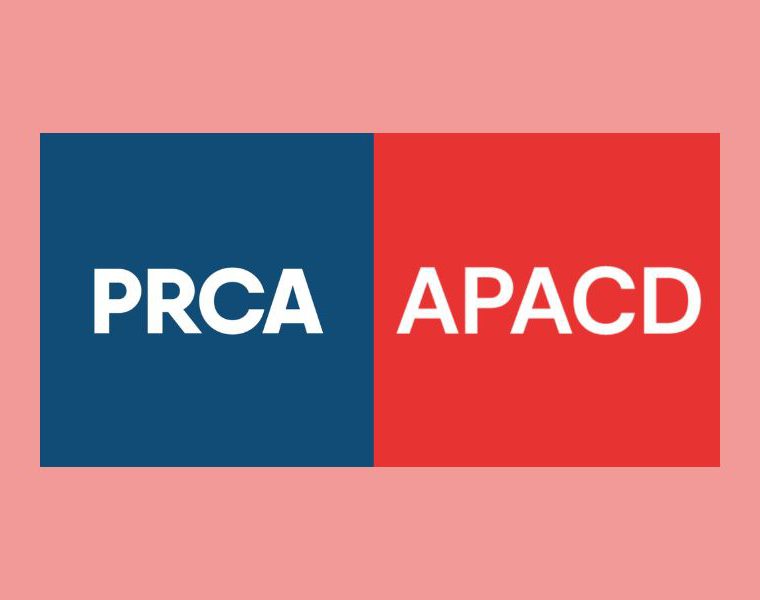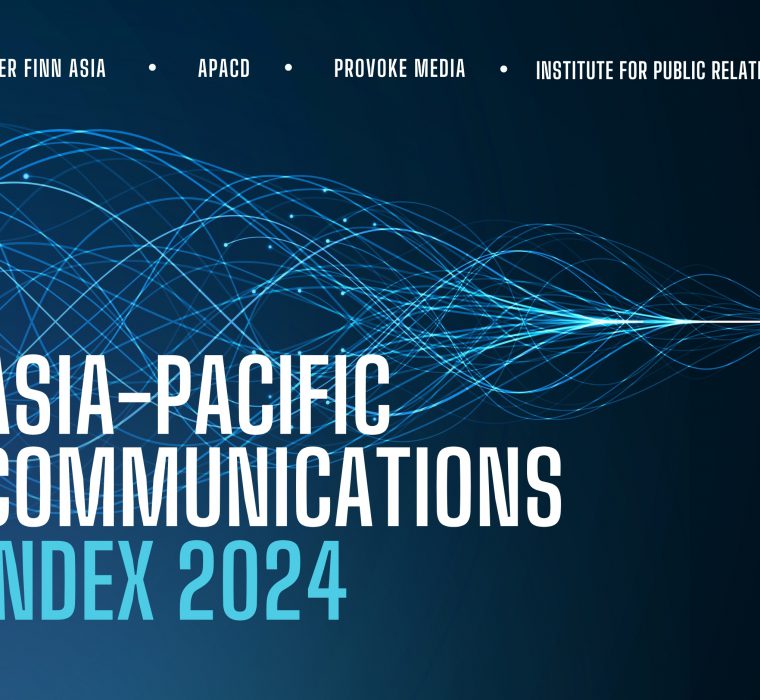Barri Rafferty: “People Were So Surprised That I Made The Shift”
17th March 2021
Barri Rafferty talks to PRovoke about her experiences since leaving Ketchum's global CEO role to lead communications at Wells Fargo last year.

Barri Rafferty’s departure from Ketchum was probably more surprising than many seasoned industry observers might care to admit. Not least because of Ketchum’s own tradition of long-serving CEOs and stable transition plans, but also because relatively few global agency CEOs have left for in-house roles.
Wells Fargo was not just any in-house role, either. Rafferty became part of a new leadership team under CEO Charles Scharf and public affairs vice chairman Bill Daley, aiming to rebuild the company’s reputation after its high-profile fake accounts scandal.
Rafferty recently spoke with PRovoke Media at length about her first nine months on the job. During a pandemic, of course, but also involving a significant shift in terms of culture and comfort zone. The following has been edited for length and clarity.
Arun Sudhaman: After previously spending your entire career on the agency side, and one agency at that, how have you found the differences between corporate and agency?
Barri Rafferty: I think people were so surprised that I made the shift. For me, both were transformation roles. At Ketchum, it was modernising the agency and I feel, in-house, it was to do something similar. We have five businesses, and [my team] operates as an in-house agency in terms of trying to have that mentality. Like agencies, we are really having to think about breaking down silos — marketing, communications, analytics, customer experience. We’re trying to create a much more insight and analytics-based approach to our strategy. We’re having to think about investing in technology like Sprinklr and Yammer. How do we better measure and create better dashboards and create a better digital experience for our people?
The biggest difference is, at the agency, you’re able to move much faster; I came up with an idea, you could be pretty agile, you test it on clients. And then I moved into a regulated industry, so that’s been a big learning curve. There’s a lot more process and risk that I need to assess so that’s given me a different level of discipline — how do I make those shifts within this type of environment? We have 260k employees — we need an inclusive approach to communications. It’s such a diverse set of employees. In an agency, pretty much everyone is of a similar background in comparison to a workforce like we have.
It’s been very intellectually stimulating. It’s certainly not boring. There’s transformation, five different lines of business, the integration of marketing and comms. I just can’t wait to meet colleagues in person.
Are there agency lessons from Ketchum that are relevant to what you are trying to do in-house?
BR: 100%. I had great exposure to B2B and B2C [at Ketchum] — that’s really come in handy. But also the agency standpoint. We built centres of excellence at the agency. I called it the fix and flex model and I’m really trying to look for similar approaches here. How do we make sure we have deep expertise in areas like visual storytelling and content. And then build a model so that our lines of business have access to that talent. We’re adopting a much more agile model of working, as we break down silos and integrate marketing and communications. I had a lot of experience on big clients like P&G, FritoLay, Pepsico, of working on integrated agency teams. All my years have helped me optimise how to create in-house and agency integrated teams.
I’m a big believer that the best clients get the best out of our agencies. How we engage agencies from the moment we create a brief. I’m now applying that in-house. Is our brief clear enough? Are we using the right in-house and agency resources to achieve that goal? How are we going to get the best work and most engaged teams?
And if we flip it, from your in-house perspective, are there areas that you think agencies can improve?
BR: If I was back agency side — I think a lot of us want to make like we’re good at everything, particularly at bigger agencies. What I’m now looking for, in a sense, is some of the superpowers of different agencies. We’re buying the talent of that agency and that agency’s strength. I’m really trying to learn to draft the right team for any project. It’s really taking a step back and making a call and being more specific about the skillsets you need.
On the agency side, we built a lot of deep vertical expertise. I find agencies saying we can do this and that and they can, but not as good as someone else. Some agencies have deeper capabilities in DE&I. I’m looking for minority-owned agencies to add to our portfolio — I think there’s perspective we need to add to our teams. We might use a real Beltway agency, because we need to get into key issues on the Hill. I might use a big agency to do a big credit card launch.
And yet, big agencies are charged with growing all parts of their business.
BR: I think big agencies can be good at many things. I’m not saying it’s one superpower. But I think honesty and transparency are really welcomed. We do work with Omnicom, Havas — we do work with big networks — but I also hope they will pull the best person no matter where they sit. We used to say that. I want them to find it for me in real time. Coming from that side, I know it’s possible. If I need an expert in climate and sustainability, I want access to that agency for the next month or on an ongoing basis.
Do holding groups find this more challenging than they should?
BR: I think they are all leaning into it. I think if the clients demand it, then they have the capability to do it.
You joined Wells Fargo at an interesting time, given the company’s reputation challenges in recent years. How would you describe the progress you have made in tackling these?
BR: I think the company is making progress. Our CEO has said we still have big steps ahead as required by our regulators. For my team, I love that I’m working at scale. We have an opportunity to support an inclusive recovery — to support social impact, sustainability, designing new products and doing lots of work with our employees and customers during the pandemic as well.
Trust is a long tail. If you cheat on your husband, you can’t just give them a diamond ring or watch to fix it. What we’re doing is really building back that customer trust. When I took the job, it was really important to close the say-do gaps — Rob Flaherty taught me that a lot of years ago. I think the company is doing the things we need to really enhance the customer experience, and so communications has the chance to tell that story and rebuild the trust in the brand over time.
One of the things the agency industry has struggled with is DE&I. Many people would say that real change is being driven by clients. Do you feel you have a responsibility to push for that?
BR: I do think it’s a responsibility. I have added to all of our agency briefs that we need a diverse team. We want our agencies to have a team that is representative of the population we serve. And we’re working to do that in-house as well, but we all have work to do. Our new head of DE&I and I are kind of connected at the hip, which is great. Making sure that, not only are we doing the right things to support our communities, but really co-creating with our senior diverse talent to make sure we shape internal comms that meet their needs.
We’re working with leaders across the organization to get their input, having really candid discussions on ways we can improve as a company and better serve our communities. Those conversations are hard sometimes, but we need that honesty. Sometimes things are hard to hear. If they see something we didn’t get right, I’ve asked them to call us out. We’ve had a lot of conversations this year, which is pushing us to do more.
How do you see the whole idea of brand purpose from the other side of the fence? On the agency side, there’s the view that companies should live their values and even play an activist role on issues. Do you still feel that way?
BR: I do. I’ve been having the same conversations. We’ve been having a lot of executive conversations around brand purpose and what we stand for. Wells Fargo has given huge amounts back to the community but we’ve really thought about what are our sustainability goals and what is our commitment to society in some of these key areas. Also through our lending and practices, we can have a great impact where we decide to focus and how we collaborate with our clients. We really are trying to think about that higher level purpose, and better rally behind key things we believe in. The important part is making sure our senior execs have a vision they are aligned behind and our employees and customers can identify with.
I suppose it’s just as hard to figure out the issues you don’t need to take on.
BR: After the Capitol riots, we — like others — suspended our giving, because you want to make sure we are aligned and evolving. Yes, there’s things the company supported 10, 50 years ago that it won’t support today. You always have to continue to evaluate the world around us and make new choices and new decisions as we become more informed. It’s going to take all of us aligned on these topics to have any sort of impact. Everything I see — whether it’s Edelman’s Trust Barometer or Weber Shandwick research — corporations are more trusted now than ever and have a more important role today in helping ensure a better future.
You’ve talked about operating an in-house agency, and there is a trend towards in-housing. Do you have any specific plans to reshape your agency and external counsel support?
BR: Right now, I feel like we need a hybrid model. We’re working on organising our in-house department to be more strategic and focus on key areas, enhancing our own visual storytelling, technology etc. I think we’re better with the interaction and support of agencies and talent, pushing us forward creatively. I’m not one to lean all into in-housing. I think we’re better with agency engagement, whether it’s a product launch or ongoing support with issues in DC, and executive visibility etc.
We are using a pretty broad array of support. Edelman on corporate, FleishmanHillard on our annual report. Beltway agencies. Several Omnicom agencies and Havas.




